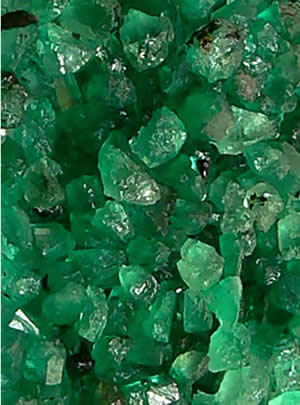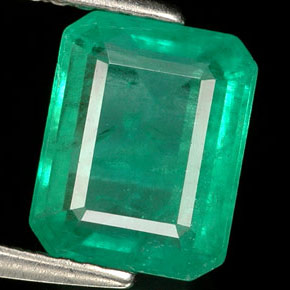Emerald Gemstone Treatments
Introduction to Emerald Treatments

Natural emeralds often come with more inclusions than most other gemstones. Beyond the internal flaws and fractures, many also show small surface-breaking fissures or cracks. That's why the majority of emeralds undergo treatment to boost their clarity. This approach is standard in the industry, though recent advances have sparked some discussions. For more in-depth details, check out our comprehensive emerald gemstone information guide.
Traditional Cedar Oil Treatment
The classic way to treat emeralds uses cedar oil, derived from cedar trees. This clear, viscous substance can be refined to a high degree. Cedar oil serves various purposes, from immersion oil in microscopy to insect repellents, antibacterial agents, and food preservatives. It's even valued in aromatherapy for its scent. For emeralds, cedar oil works well because its refractive index is close to the gemstone's, making it ideal for filling fractures in treated emeralds.
The Emerald Treatment Process
Cedar oil's thickness means it doesn't easily seep into emerald's tiny cracks without help. So, heat and pressure come into play. First, the emeralds get cleaned, typically in an acid bath. Then, they're placed in a heated hydraulic cylinder filled with pure cedar oil and sealed shut. The heat thins the oil, and the pressure pushes it into the cracks.
After a few hours, the cylinder cools down. The gems are removed and cleaned. The oil inside the emerald thickens back up, resisting leakage unless exposed to ultrasonic cleaners, extreme heat, or strong solvents.

Modern Fillers and Ongoing Debates
Traditional oiling holds up well but isn't forever. Over time, an oiled emerald might need re-oiling to stay looking sharp. That's led to experiments with more lasting options, like natural and synthetic resins (think Opticon), polymers, and prepolymers. These newer fillers have stirred up debates, especially when the specific type isn't clearly stated.
Hey, if you're shopping for emeralds, keep in mind that transparency about treatments can make a big difference in your decision. If you're curious about lab-grown alternatives to natural stones, explore our detailed synthetic emerald information page.
Understanding the Degree of Enhancement
One key detail buyers seek is the extent of an emerald's enhancement. This might matter more than the filler itself. Labs like the GIA (Gemological Institute of America) have created systems to rate enhancements as minor, moderate, or significant, based on how many surface-reaching fissures are filled.
Frequently Asked Questions
Why are emeralds treated?
Emeralds are treated mainly to improve their clarity, as they naturally have many inclusions, fractures, and surface cracks.
What is cedar oil used for in emerald treatments?
Cedar oil fills tiny cracks in emeralds due to its matching refractive index and viscosity, helping to enhance the stone's appearance.
Is emerald oiling permanent?
No, traditional oiling isn't permanent; emeralds may need re-oiling over time to maintain their look.
What are some modern alternatives to cedar oil?
Alternatives include natural and artificial resins, polymers, and prepolymers, though these can be controversial if not disclosed.
How is the degree of enhancement measured?
Labs like the GIA classify it as minor, moderate, or significant based on the number of filled surface-reaching fissures.

